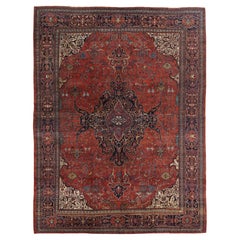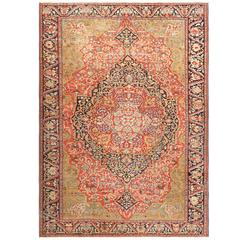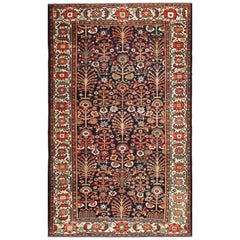Painted Sarouk Carpet
Antique Late 19th Century Persian Sarouk Farahan Persian Rugs
Wool
Recent Sales
Early 20th Century Persian Sarouk Farahan Persian Rugs
Wool
Early 20th Century Persian Sarouk Farahan Persian Rugs
Wool
People Also Browsed
Antique Late 19th Century French Napoleon III Chandeliers and Pendants
Crystal, Bronze
2010s Turkish Oushak Persian Rugs
Wool
Antique 1890s Indian Persian Rugs
Wool
Antique Late 19th Century French Fireplaces and Mantels
Wood
Antique Late 19th Century English Georgian Fireplaces and Mantels
Wood, Oak
Early 20th Century American Arts and Crafts Side Tables
Wood
Antique 19th Century French Victorian Table Lamps
Bronze, Ormolu
Antique Late 19th Century American American Classical Fireplaces and Man...
Mahogany
Antique Mid-19th Century Chinese Side Chairs
Wood, Elm
Antique 1890s British Qing Chaise Longues
Steel
Antique 1880s Persian Islamic Persian Rugs
Wool
Antique Late 19th Century Persian Tabriz Persian Rugs
Wool
Antique 19th Century Chinese Chinese and East Asian Rugs
Wool
Antique 1890s Persian Persian Rugs
Wool
Antique 1890s Chinese Persian Rugs
Wool
Antique Late 19th Century Persian Khorassan Persian Rugs
Wool
Painted Sarouk Carpet For Sale on 1stDibs
How Much is a Painted Sarouk Carpet?
Finding the Right Persian-rugs for You
Make a bold statement in a living room or bedroom by incorporating vintage Persian rugs in your home decor.
A Persian carpet lends an aura of prestige to any room, even today. The fascination with Persian rugs dates at least as far back as the 4th century B.C., when historian Xenophon referred to the “soft rugs on which the Persians sit.” For centuries, Iran (modern-day Persia) has been known for the craftsmanship, intricate patterns and artistry of its carpets, which have found their way into households and museums around the world.
Although they have many imitators, real Persian rugs are made only in Iran and are easily recognized by their vibrant colors and elegant patterns.
Traditional, or antique, Persian rugs are what most people identify as “authentic.” Hand-made, they are very durable and, if properly cared for, can be passed down from generation to generation. Modern Persians, on the other hand, are often machine-made. Today’s carpets, Iranian or otherwise, can’t possibly match the level of craftsmanship that prevailed centuries ago, so historical Persian carpets will always be admired and highly valued.
Although the machine-aided production process is much faster and cheaper, the resulting rugs typically do not have the same quality or lifespan as handwoven ones, so traditional options are considered better investments.
To distinguish between the two, look for imperfections. Because traditional Persian rugs are handwoven, you will likely see small flaws on the front and back. With a machine-made imitation, on the other hand, you will probably not find stitching glitches, and the back will have a mesh or plastic covering.
Antique rugs are handmade from the finest materials, including wool, silk or cotton — never synthetic fibers. The fibers used in antique rugs are colored using natural dyes derived from insects and plants and woven into bold designs that reflect Iran’s culture and history. Since Persian tribes traditionally raised and herded sheep, wool was the most common material. The fiber has many advantages: It is fire-resistant and dries much more quickly than cotton. Also, because of its natural elasticity, it is more durable than cotton or silk. Regarded as works of art, Persian rugs can take months or years to complete.
The different types of Persian rugs are named for the cities, villages and regions where they’re made. Kashan rugs, for example, woven in the north-central Iranian city of Kashan, are considered among the finest city rugs, distinguished by curvilinear motifs like palmettos, leaves and arabesques. Nains have high knot counts, an indication of high quality, and generally employ pink, blue and ivory hues, while Tabriz rugs — created by weavers in the northwestern Iranian city of Tabrīz (or Tabriz) — mostly have floral and garden patterns.
When shopping for vintage Persian rugs, you'll want to consider color, size and more — for a history of these rugs and tips on how to style yours, visit our guide to these woven creations today.
Find Tabriz rugs, handmade silk Persian rugs, Persian tribal rugs and other antique and vintage rugs from the world's best furniture dealers on 1stDibs.


